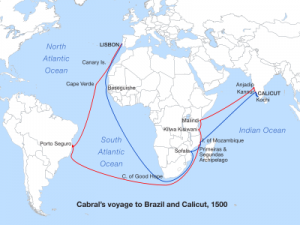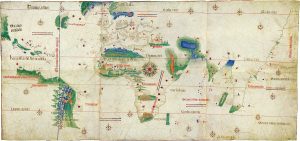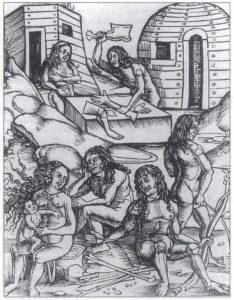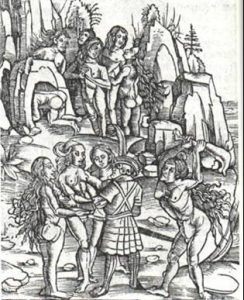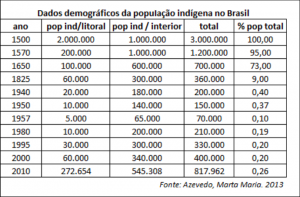Announcements
- Movie screening next week. Not required, but all are invited.
LA History and Culture blog post by Chris
“Pope Francis’ Colombian Visit”
Context for the visit:
- Referendum to pardon the FARC rebels did not pass
- Despite the lack of support, the pardon was passed as law anyway
- The suggested pardon was not widely supported due to suffering endured on the part of the rebels
Controversial decision:
- This move was controversial because the government decided to ignore popular support
- Pope Francis decided to support this move for peace
- Colombia government, despite passing the bill, does not uphold their end of the deal
- Allowances for re-integration into Colombian society
This article mainly reflects the failures of the Colombian government, while not providing much perspective from Colombian citizens. It also provides emphasis on the influence and involvement of Catholicism in South American politics. Included is a link to an interactive webpage detailing the history of the Vatican and South America.
Questions:
- What was the nature of the conflict between Colombia and FARC?
- FARC was a Marxist organization with involvement in drug trade
- The Colombian government wanted to re-use the farm space that was being used to grow drugs
- FARC was kidnapping political figures for ransom
- Multiple parties increased the violence of their tactics
- FARC was one of the most well-funded criminal organizations in the world
- This referendum was not passed?
- The majority vote did not support the referendum, but the Colombian government decided to pass it into law regardless
- A storm that was present on the day of the referendum potentially suppressed voter turnout, leading many to call for a second referendum
- Why is the Catholic Church making strides in Latin America?
- Catholicism in Latin America had relatively recent changes reflecting on what the majority of people want
- After the ’60s, masses were no longer being held in Latin
- Shifts in the relations between the public and priests occurred
- The Vatican has also been making moves with social change
- Compared to evangelical sects, Catholicism is not as conservative as stereotypes claim
- In accordance with everyday life, the Catholic Church tends to be more liberal
- Pope Francis has been drawing on his experiences in Latin America
- The Church has also been involved in mediation in Venezuela
- Cuba also had some involvement in Colombia alongside the Church
- Comments about “dirty wars”
- Huge death tolls
- Not everybody will necessarily be happy with peace
Questions about the Paper
- How do you want us to get the citation info for the primary sources?
- The info is available for the web sources
- Ask the writing center or the Purdue OWL for help on citations
- The photocopy source doesn’t come with info, so a link has been provided
- Do you want us to cite throughout the paper?
- Yes, and be sure to use footnotes
- When citing journals, is it necessary to include the dates?
- Yes, including citations builds credibility as an author
- When using a quote, be sure to contextualize the quote and explain why you used it
- Usually, you want to paraphrase
- Zotero is very useful for citations
- It saves you time
- Be sure to invest in learning how to use it
- There are videos available online
- Be sure to pick one primary and one secondary source
- You are allowed to use two secondary sources
- Be sure to engage in an argument, not just state facts
- How do we cite a letter?
- Author, title, reprinted in…
- Secondary sources can be refuted, you don’t have to agree with them
- Make sure the paper is short and focused
- Each paragraph should be organized and have a topic sentence
Primary source analysis
Professor Holt divided us into three groups to focus on the three different perspectives involved in the primary sources that we had read for this class. The three perspectives were Hernán Cortés, Bernal Díaz, and the Florentine Codex. We discussed the similarities and differences between the sources and determined the factors that contributed to the contextualization of the perspectives of these sources.
Hernán Cortés:
The letter was written to Carlos V. Cortés was trying to emphasize the nature and usefulness of the new world. He describes how the natives disfigured their bodies with piercings. He also compared the architecture to the Moors, showing his perspective of other cultures as being grouped together. He criticized the human sacrifices that the natives took part in and declared that these should be removed from their practices immediately, focusing on how the Spanish will change everything. Similar to Columbus’ letter that we have read in class previously, Cortés had a lot of focus on the body.
The perspective involved how Cortés was trying to be persuasive to a monarch. Unlike how when Columbus saw innocence among the natives, Cortés saw savagery. He saw it as the Spanish’s obligation to convert the natives to Catholicism. Also it was noteworthy that Columbus and Cortés were talking about different peoples. Focus on how the new world can provide assets to Spain, he focused on the “gold, God, and glory.”
Bernal Díaz:
Díaz was a soldier that served under Cortés. The source focuses on the interactions between Cortés and the Nahua people. He called his source “The True History of Conquest.” He wrote it to try and right Cortés’ wrongs from what he had said about the conquest of the new world. By the time of publication, the reputation of the new world was already heavily embedded in Europe.
There is still some overlying bias in Díaz’s account, although much less compared to Cortés. He has a much more balanced approach, and includes more details in his account. However, he still makes some cultural assumptions, understanding that the natives are “savages” and sees the need for no further explanation.
Florentine Codex:
The Florentine Codex (named after the fact that it is being archived in Florence) was an indigenous account of the Spanish post-conquest. It was written by Fray Bernardino de Sahagún who was a Franciscan friar. He learned the indigenous languages and recorded a collaborated account, leading to some still present bias tied to mediation.
The Codex displayed the perspective that they saw the Spanish as godly, but the natives were trying to scare the Spanish away. However, the Spanish did not leave, which led to much concern on the natives’ parts, showing a perspective of “we’re nothing to them.” (Ants among giants).
Bernardino still had his bias as a missionary. It is worth understanding what people were willing to tell him. Cortés was detailed as a divine figure in the Codex. There was a lot of emphasis on the interest in the new technologies, such as the iron armor and weapons. There was also some focus on the curliness of the Spaniards’ hair and beards, as well as the different colors.
Think about:
How do the Spaniards return their hospitality? How to the Spaniards fight?

